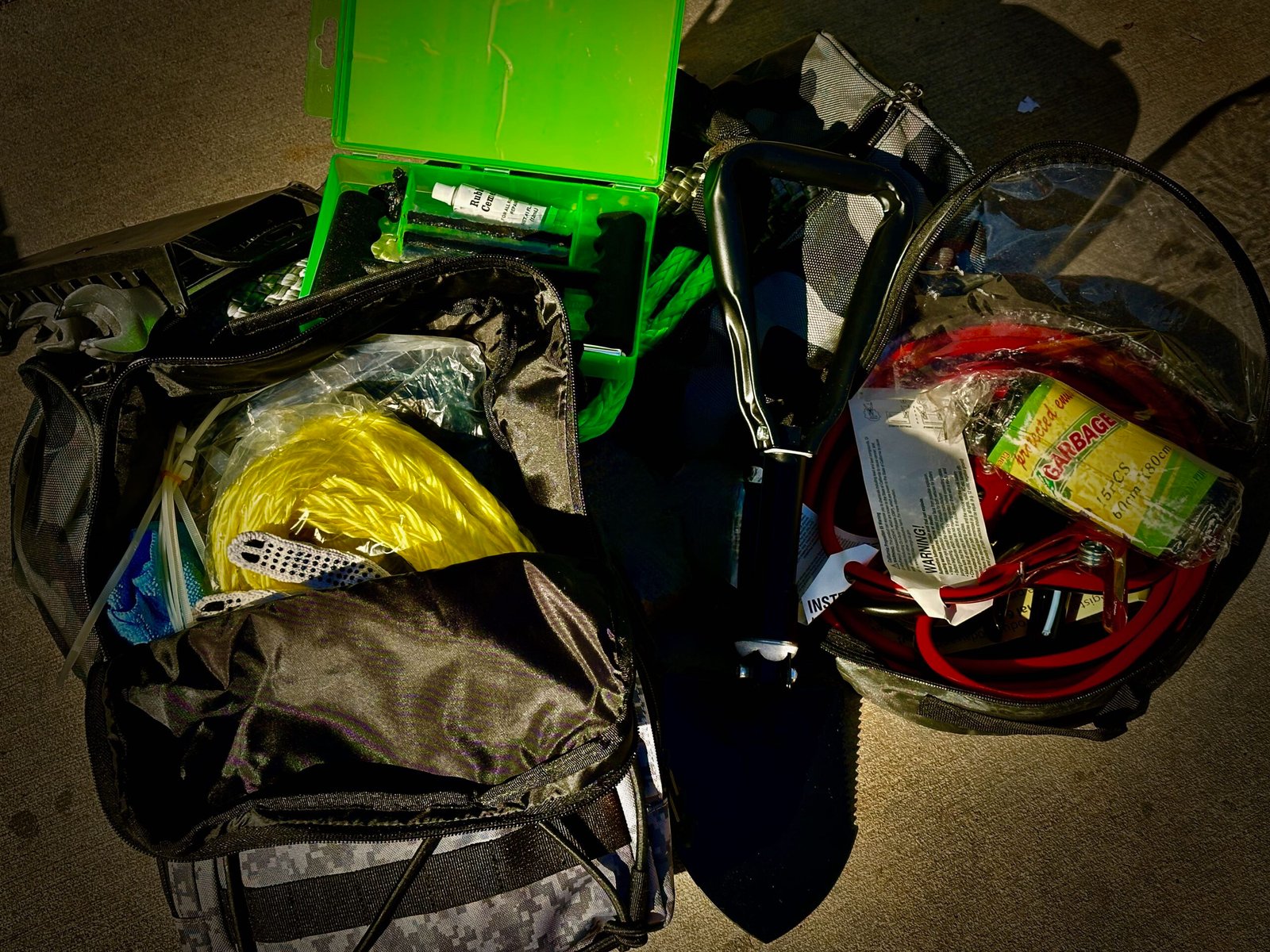Embarking on an off-road adventure is an exhilarating way to explore the road less traveled. But along with the thrill comes the potential for tricky situations. Whether it’s mud, sand, or a mechanical issue, being prepared is not just a convenience—it’s a necessity. The ultimate off-road recovery kit is your lifeline out of tricky situations. It ensures that your off-the-beaten-path escapades don’t turn into unintended camping nights. In this comprehensive guide, we dive into the essential gear that should be a staple in every 4×4 enthusiast’s vehicle. Get ready to equip yourself with the knowledge and tools for a smooth recovery, whatever the terrain may throw at you.
Understanding Off-Road Recovery
Before diving into the kit essentials, let’s understand what off-road recovery entails.
It’s the process of getting your vehicle unstuck from any obstacle you may encounter while traversing off the beaten path. This can include a variety of environments such as mud, sand, snow, rocks, and water crossings. Recovery is often necessary because traditional road services like tow trucks are usually unable to reach or operate effectively in such challenging conditions.
Being prepared for any situation is crucial, especially when going solo. Whether it’s a rollover, getting stranded on a rock, or stuck in the mud, having the right skills and equipment is essential. In a group setting, being prepared is always beneficial, even if it’s simply to lend a hand. Knowing proper recovery tactics can transform a potential mishap into a positive adventure remembered for all the right reasons, rather than an unfortunate event that’s memorable for the wrong ones.
The Non-Negotiables: Essential Off-Road Recovery Gear
Tire Repair Kit
The most common problem faced when off-roading, a flat tire can halt your journey faster than deep mud. A comprehensive tire repair kit is indispensable for fixing punctures when you’re miles away from the nearest service station.
Air Compressor
After repairing your tire, or when traversing different terrains, adjusting tire pressure is crucial. A portable air compressor that can handle the volume of your vehicle’s tires is a vital part of your recovery kit.
Heavy-Duty Recovery Strap and Shackles
Recovery straps are a must-have, allowing you to be pulled out by another vehicle. Unlike chains, they are lightweight and have the ability to stretch, providing a more controlled and safer recovery operation.
Your recovery kit should start with a recovery strap capable of handling the weight of your vehicle. Look for straps with a minimum breaking strength that exceeds your vehicle’s gross weight, and always opt for one without metal hooks, which can become hazardous projectiles if a strap breaks. Pair it with rated shackles to create secure anchor points on both the recovery and stuck vehicle.
Shackle Hitch Receiver and D-Rings
To attach your winch line or recovery strap safely to another vehicle or anchor point, you’ll need a sturdy shackle hitch receiver and several D-rings. They distribute the load evenly and prevent damage to your vehicle.
D-ring shackles serve as a robust connection point between your vehicle and the tow line. Ensure they are rated for an appropriate working load to guarantee a safe recovery operation.
High-Quality Winch
A winch is not just a tool; it’s your lifeline when there are no other options. A dependable winch can pull you out of the deepest ruts and most precarious positions. Look for one with a rated line pull at least 1.5 times greater than your vehicle’s gross weight, synthetic rope for durability, and a reliable electrical system.
Accessories like a winch line damper and a tree trunk protector are vital for safe winching operations. Also consider a snatch block. This pivotal piece of equipment allows you to change the direction of the winch cable when the anchor point is not directly in front of the stuck vehicle. It also doubles the winch’s pulling power, essential for heavy recoveries.
A small tool kit
Having a compact yet comprehensive tool kit in your vehicle is an invaluable asset, especially if you’re fond of off-road excursions where professional help may not be readily available. The key to a small tool kit is to cover the basics without taking up too much space.
Start with a high-quality socket wrench set, which should include a variety of socket sizes to fit the common bolts and nuts found in your vehicle. A set of screwdrivers is essential—include both flathead and Phillips heads, in a couple of different sizes, since these tools are necessary for tightening loose screws and can be used for prying tasks as well.
Pliers also earn their keep in your tool kit. A pair of adjustable pliers can grip a multitude of objects, and needle-nose pliers are excellent for reaching into tight spaces. If possible, include a pair of wire cutters for any unexpected electrical work.
A few additional items can also be lifesavers. Include a roll of duct tape for temporary fixes—from patching up hoses to keeping loose parts in place. Cable ties are another handy addition, perfect for securing components temporarily. Don’t forget a sturdy pair of work gloves to protect your hands during tough jobs.
Finally, if there’s a specific tool required for a common job on your vehicle, make sure to include it. With this thoughtfully assembled tool kit, you can confidently handle most minor repairs and adjustments on the go, keeping your adventure on track without major interruptions.
Traction Mats and/or Recovery Boards
These are the off-roader’s best friend when traction is lost. Durable and portable, traction mats and recovery boards provide the necessary grip to get your vehicle out of mud, sand, or snow. When tires are spinning without grip, these mats and boards can be the difference between staying stuck and driving out. When choosing recovery boards, opt for ones with a high load capacity and a design that ensures easy cleaning.
Additional Off-Road Recovery Accessories
While the non-negotiables will cover most recovery situations, there are additional accessories that could prove invaluable in specific circumstances.
Gloves
Never underestimate the importance of a good pair of gloves. They protect your hands from injury during recovery operations and provide the necessary grip.
Folding Shovel
A shovel might seem rudimentary, but it’s indispensable. A compact, sturdy shovel can help you dig out around stuck tires, under the chassis if high-centered or create traction paths in soft ground.
Hi-Lift Jack
The high-lift jack is an off-roader’s Swiss Army knife. It can lift, winch, clamp, and spread — a versatile tool that can be a lifesaver in many situations. It’s particularly useful in situations where you need to change a tire on uneven ground.
Headlamp and Flashlight
Illumination is critical during night recoveries. A headlamp offers hands-free light, while a powerful flashlight can help in assessing the situation around the vehicle.
Chain Saw or Sawzall
If you’re in wooded terrain, a fallen tree might block your path. A portable chain saw or Sawzall can help you clear the way.
Communication Devices
In areas without cell service, a satellite messenger or a two-way radio can be a lifesaver, ensuring that you can call for help if a recovery goes beyond your capabilities.
Customizing Your Off-Road Recovery Kit
No two off-road adventures are the same, and your recovery kit should reflect the terrain you plan to conquer.
Terrain-Specific Gear
Consider the primary terrain you’ll be exploring. Sand mats might be essential in the desert, whereas a winch anchor is crucial when there are no natural recovery points.
Weight and Space Considerations
Balance the need for comprehensive recovery gear with the limitations of your vehicle’s weight capacity and storage space.
Waterproof Gear Bags
Keep your gear protected from the elements in extreme conditions with waterproof bags. This ensures that straps, ropes, and electronic equipment stay dry and ready for use.
Regular Maintenance and Inspection
Regularly inspect your recovery gear for wear and tear. Ensure mechanical parts are lubricated and operational, and replace any item that shows signs of damage.
The Prepared Off-Roader
Knowing how to use your recovery kit is as critical as the gear itself. Consider taking an off-road recovery course or watching instructional videos to learn the correct and safe ways to use each piece of equipment. Practice in a controlled environment before heading out on the trail to gain confidence and solidify what you’ve learned.
An off-road recovery kit is not just about having the right tools; it’s about fostering a mindset of preparedness. By equipping yourself with the essential gear and the knowledge to use it, you empower yourself to face the unpredictability of the wilderness with confidence. Remember, the goal is not to avoid getting stuck — it’s about being prepared to get unstuck and continue the adventure.

